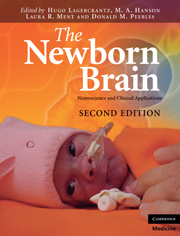Book contents
- Frontmatter
- Contents
- List of contributors
- Preface to the First Edition
- Preface to the Second Edition
- 1 Reflections on the origins of the human brain
- Section 1 Making of the brain
- Section 2 Sensory systems and behavior
- Section 3 Radiological and neurophysiological investigations
- Section 4 Clinical aspects
- Section 5 Follow-up
- Section 6 Consciousness
- Index
- Plate section
- References
1 - Reflections on the origins of the human brain
Published online by Cambridge University Press: 01 March 2011
- Frontmatter
- Contents
- List of contributors
- Preface to the First Edition
- Preface to the Second Edition
- 1 Reflections on the origins of the human brain
- Section 1 Making of the brain
- Section 2 Sensory systems and behavior
- Section 3 Radiological and neurophysiological investigations
- Section 4 Clinical aspects
- Section 5 Follow-up
- Section 6 Consciousness
- Index
- Plate section
- References
Summary
Introduction
Human beings belong to the biological species Homo sapiens. The definition of the species includes the description of the characteristic anatomy and physiology of the body, as well as of the functional organization of the brain together with the multiple facets of behaviors unique to human beings. The human brain is obviously a fascinating object of scientific investigation.
The aim of this chapter is to debate the origins of the human brain. This raises an overwhelming challenge. First of all, one should attempt to delineate what makes the human brain “human,” even in the newborn, and to identify the features that distinguish it from the current living primates and from its fossil antecedents. It is intriguing, on the one hand, to find ways of specifying the universal traits of “human nature” in objective terms. On the other hand, the broad diversity between individuals, in particular as a consequence of their past and recent personal and/or cultural history, raises a second challenge. Does such diversity break the unity of the human brain within the human species?
A tension thus exists in neuroscience, as well as in the humanities, between two main lines of research: one that aims at defining the universal characteristics of the human species, for instance at the level of the infant brain, and the other that stresses the variability of cognitive abilities in adults, such as the language they speak and the social conventions they adopt.
- Type
- Chapter
- Information
- The Newborn BrainNeuroscience and Clinical Applications, pp. 1 - 22Publisher: Cambridge University PressPrint publication year: 2010

